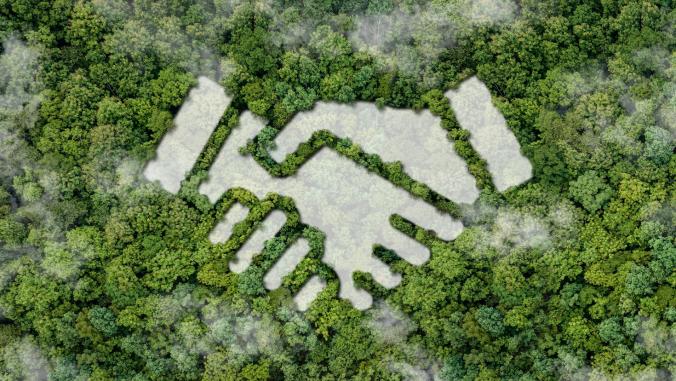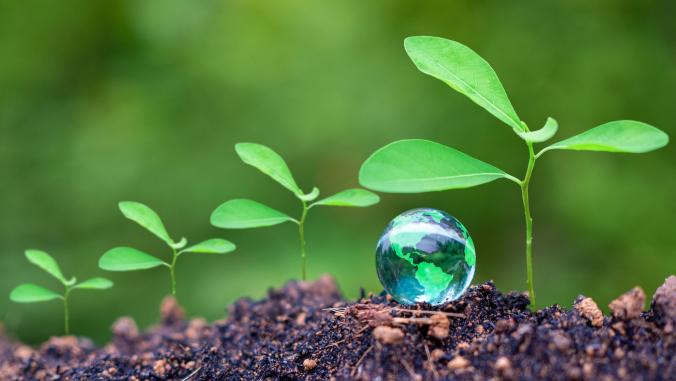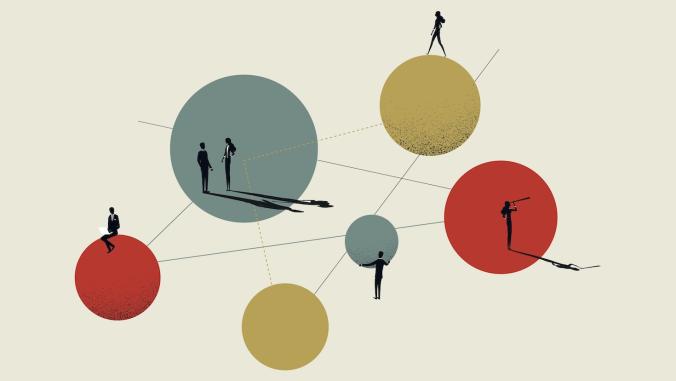Dear Shannon: How do I create key sustainability skills?
<p>This month, our resident career coach advises a HR director on how to develop core competencies.</p>

Tools image by Kamira via Shutterstock
If you have a question for Shannon, send it to [email protected].
Dear Shannon,
I'm a HR executive for a global retail firm. Our small sustainability team has been operating as a stand-alone department for the last five years, but now the board is keen to grow sustainability leadership and embed sustainability throughout the supply chain. My problem is that the sector is so woolly and the key competencies required to deliver on this vision are far from clear. Do you have any tips on how I can support the existing team's development and make sense of the core competencies our non-sustainability staff will need?
— Lauren, Geneva, Switzerland
Dear Lauren,
Welcome to the minefield. Sustainability is a notoriously woolly and evolving agenda, and as the competitive advantage from engaging with it becomes more established, likewise the demand for top talent grows. But what does this talent pool look like?
In a nutshell, the answer is, "Good question." While hiring managers like you struggle to get a grip on the core competencies needed for key sustainability roles, emerging leaders equally are mired in the confusing search for a clear career path. The reports I hear time and time again from jobseeking clients and recruiters confirm this. To add insult to injury, some say that even the ideal candidates for sustainability roles don't identify themselves as such. That's how challenging this sector is from a careers perspective.
So what's the solution? One idea that's gaining traction in the industry is the notion of an organization-specific competency framework that supports sustainability leadership across all job levels and functions. As there is no universal list of competencies or key performance indicators, this is an opportunity for you to build your own — and redefine your company's professional development targets while you're at it.
How to identify leadership and intrapreneurial competencies?
Fostering sustainability leadership and embedding the concept throughout the supply chain is a difficult task, so you'll need to take a strategic approach that makes use of the research and tools already out there.
A useful place to start is Business in the Community's competency map. By breaking down key behaviors under interpersonal, organizational and personal themes, this map gives a clear synopsis of the requirements for strong sustainability leadership from collaboration to innovation and communication. The focus on behaviors is good for identifying the high-level competencies that will help you design professional development programs that truly support staff to lead.
They also can help you identify the behaviors non-sustainability staff will need in order to meet your board's objectives of embedding sustainability. "In sustainability, there is rarely a mandate to do what needs to get done, so practitioners must be able to influence different people with different agendas," says Jennie Gabraith, chair of the Institute of Corporate Responsibility and Sustainability working group.
Indeed, the ability to make the business case, facilitate collaborative engagement and bring people from different sectors and departments together — often for the first time — is crucial, regardless of level or function.
In my experience from working with more than 3,000 sustainability practitioners over the past 10 years, I would suggest you consider the following in designing your competency framework:
1. Bravery and resilience
2. Ability to balance global and local perspectives
3. Innovative and systems thinking
4. Influencing and negotiating
5. Engaging others in the on the journey on their terms
To foster sustainability leadership in your organization and channel action out of the standalone team and into the wider organization, taking the time to strategically identify these high-level competencies and implement professional development programs to support their achievement will reap rewards in the long term.
What about the technical competencies?
"Enough of this high-level stuff," I hear you say. "What about the solid skills, knowledge and traits? How do we map the practical criteria?"
Well, I hate to break it to you, but the consensus from the market is: It depends. The core skills, knowledge and traits for sustainability roles are very much down to the level and technical function of the role, regardless of whether it's a "sustainability job."
"It depends at what level an individual is operating," says Andy Cartland of Acre Resources. "For instance, if you asked about which core competencies IT professionals should develop, the answer would be programming/design/technical skills. But you'd expect directors to be effective managers of people and managers of change programs. The same logic applies to the varied technical and managerial roles within the sustainability agenda."
As sustainability functions increase within traditional commercial roles, the competencies required to achieve success depend on your specific hiring needs. A CR report (PDF) by Ashridge agrees with this: "Rather than thinking of skills, knowledge and attitudes, it is more useful to discuss leadership qualities, management skills and reflexive abilities."
The message here is to focus on the high-level competencies for sustainability and let the core technical competencies emerge for the traditional department or role in which the person you're hiring eventually will sit. For example, if you're looking to integrate sustainability in the supply chain, look for candidates with a strong track record in purchasing or auditing as well as evidence of the high-level sustainability competencies you identified. And — it goes without saying — make responding to both skill sets a key component of the job application process.
Organizational design and measuring performance
Once you've identified core sustainability competencies and have wrapped your head around the skillset required for sustainability action within traditional roles, it's time to look at organizational design. You've mentioned that your sustainability team is standalone, but that the board's goal is to embed sustainability throughout supply chains. The mix of both is ideal: While the core department is doing the broader strategic thinking and rolling up the measurement and reporting of initiatives, the staff on the ground are making the impact while making money.
Making this work in the long term will require professional development and a review process that takes sustainability metrics into account. But beware — this is largely uncharted territory. As a recent International Society of Sustainability Professionals report (PDF) explains, "While many have made progress in addressing the issues at the level of policies and values, relatively fewer have begun to address the challenge of developing new business metrics or performance measures that explicitly account for the social and environmental impacts."
You're at the forefront of this field. It's very early days, but emerging best practice points to the importance of defining a clear development track against which performance can be measured. Such an approach has the dual benefit of incentivizing non-sustainability staff to change the way they do things while keeping the core sustainability team motivated. The Institute of Corporate Responsibility and Sustainability is developing a recognition framework for tracking and measuring achievement, so keep your eyes peeled for new information from them.
In the meantime, contact me if you'd like some practical advice and tools for embedding and incentivizing sustainability concepts in your workforce or strategic hiring for sustainability objectives.
Image by Kamira via Shutterstock





